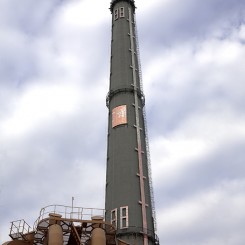Though rumors were circulating that the biennale received over 50 million in funds, Qiu confirmed that it was in fact only 18 million, which was reduced to 16 million because of the costs of dismantling.[3]
“Even though the total amount of money given by the government was four or five times that of previous biennales, costs have drastically risen,” said Qiu at a Biennale press conference.
“Before, the Shanghai Art Museum’s exhibition area was 4,500 sq meters; now the exhibition area is 15,000 sq meters. This means that work volume has more than doubled. In addition, because the exhibition period has been extended from two to six months, this means that whereas in the past we could rent projectors, now must buy them. When you use a projector for six months, the bulbs burn out.”
He compared this budget to the 2011 Chengdu Biennale which received 36 million RMB in funds for a show which was rumored to be both poorly organized and badly installed, or the Gwangju Biennale, which has a budget of over 56 million RMB and an endowment fund of 182 million RMB.[4] He also cited the Singapore Biennale (30 million RMB) and Yokohama Triennale (81 million) as examples of wealthier biennales.
Another hitch that impeded the organization of this year’s biennale was the 18th Party Congress, which made leaders hesitant about rubber-stamping initiatives because they didn’t know if the new leadership would approve of their decisions. This meant that many works had to be shipped by air rather than by sea, eating up precious funds.
In a sense, one has to feel sorry for Qiu Zhijie, who came to the job with grand ambitions, put together a very sophisticated set of themes and had very little institutional support; yet at the same time, he should have known the limits of his funds, his team and his space and scaled back the project accordingly. Perhaps what this shows us is that a biennale which is still wedged within the official system in China will always be plagued by these problems, as long as it is under the umbrella of the Power Station of Art or a government-funded museum. Perhaps a truly indepentently run biennale with decent financing would have a better shot at organizational success.
[3] Qiu Zhijie, “Qiu Zhijie Rants about the Shanghai Biennale: Do Not Let the Rumors Runneth Over,” (邱志杰吐槽上海双年展:不要让谣言泛滥), http://www.qiuzhijie.com/blog/, September 27, 2012
[4] Qiu Zhijie, “Qiu Zhijie: What is the Root of the Problem?” From Feichang Xianchang, October 11, 2012, http://contemporary.artron.net/show_news.php?newid=271275



